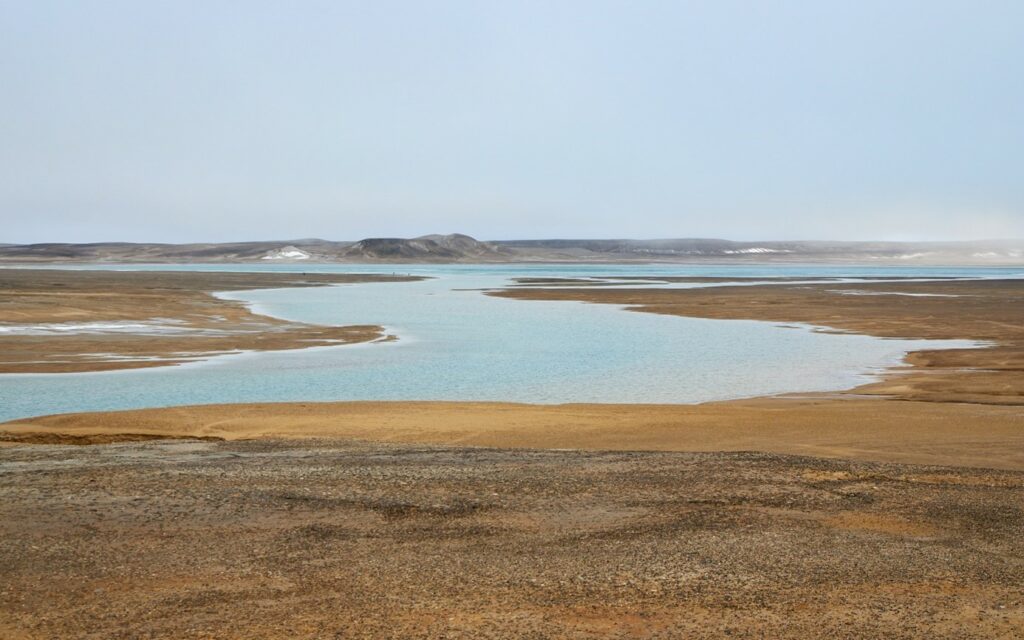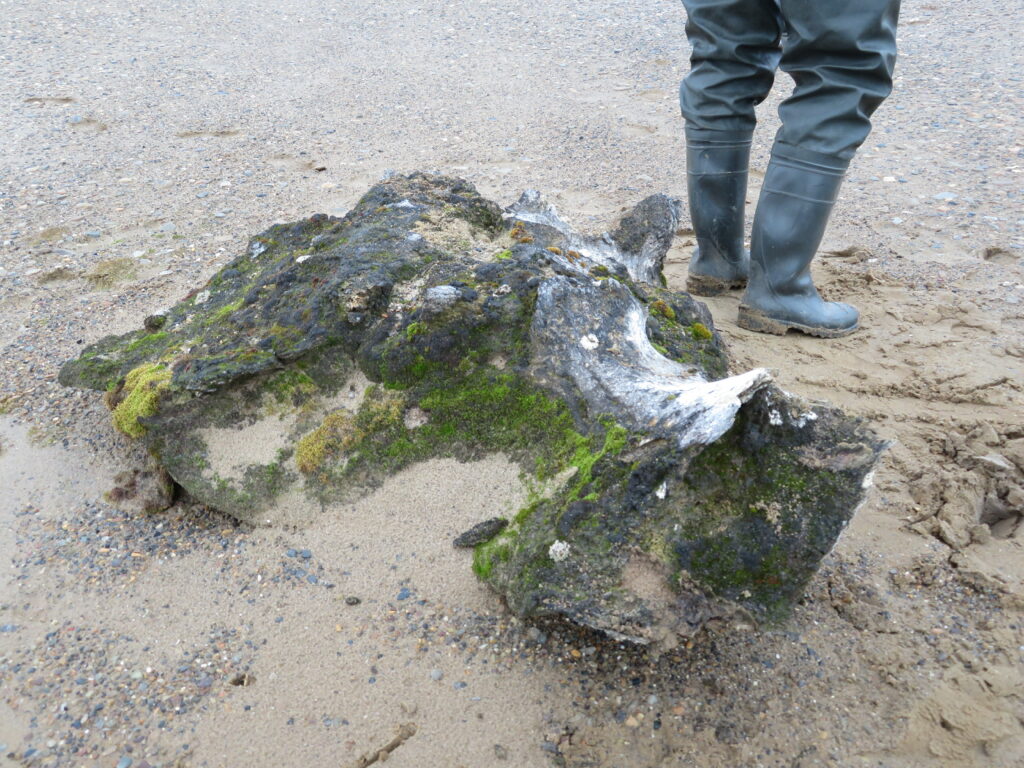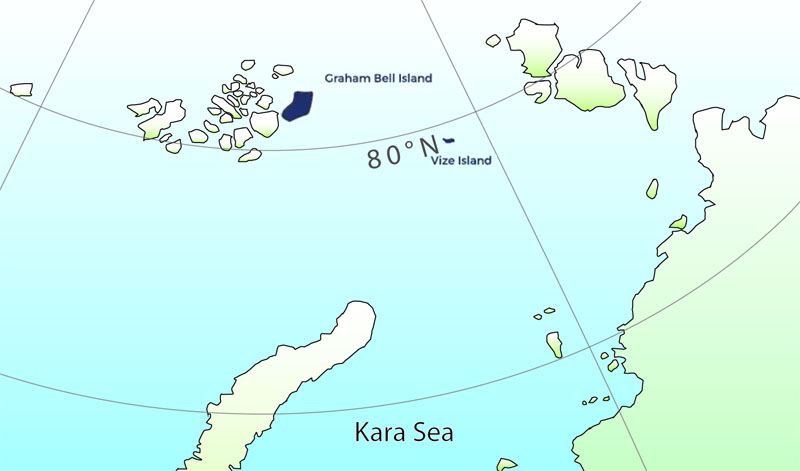81.50° North, 64.55° East – Cloudy, -2 °C, wind speed: 8.2 m/s
Scientific Investigations on Vize Island and Graham Bell Island
On 14 August, a team of 12 scientists from Russia, Germany and Switzerland, had the rare opportunity to visit Vize Island under the watchful eye of their polar bear guards. One of the remotest High Arctic islands in the Kara and Laptev Seas, Vize Island is located roughly 130 nautical miles to the southeast of the Franz Josef Land archipelago. The following day, the Akademik Tryoshnikov returned to Franz Josef Land, where the same team of scientists was deployed in the northeast of Graham Bell Island. The island had already been visited by the ice-coring team a couple of days earlier (see the blog post of 13 August).
The stark differences between the vegetation distribution and biodiversity on Vize and Graham Bell Islands were immediately evident. The islands have a different flora and vegetation due to their surface geology, soil texture and climate. Loamy soils, comprised of clay with some sand, on Vize Island, provide more suitable growing conditions for plant communities. The many processes associated with the low temperatures on the island, form an uneven surface, in turn creating areas where plants are protected by the snow. This protection results in a higher diversity of plants and greater vegetation coverage. Graham Bell Island, on the other hand, is covered by sandy sediments and is characterised by a flat relief with a very thin snow layer. Without snow cover for insulation, plants are exposed to very low winter temperatures and only few species can grow. Hence, the biodiversity on Graham Bell is very low. From the three groups of lichens, only crust lichens were discovered, but no lichens with shrubby or leaf-like appearance were found by the expedition team. Only three species of vascular plants were identified, all of which were growing in areas disturbed by human activity. This is in contrast to the natural habitats on Vize Island where 10 vascular species were found with relatively high abundance. Whale bone remains, found close to the shore on Graham Bell Island, provided the nutrient-rich habitat for the most diverse moss flora found in the area.



Header photograph: A member of the team on Vize Island marks out a study area where the plant distribution and soil microbiome were measured.
Rights: © 2021 Swiss Polar Institute, CC BY 4.0 